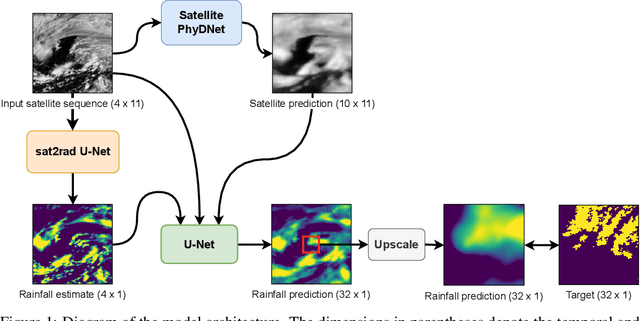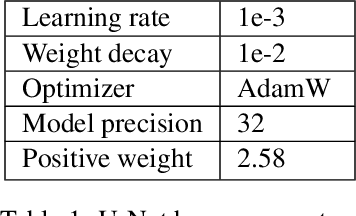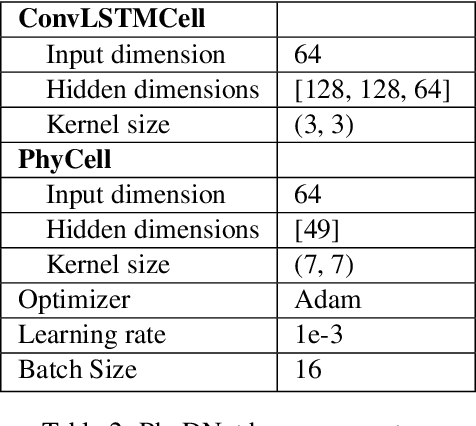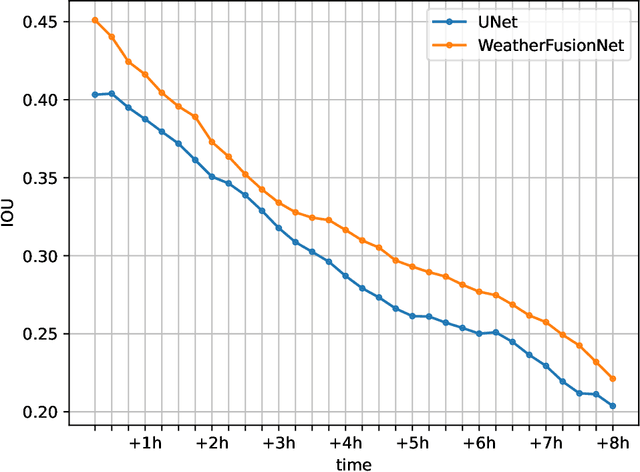Matej Choma
Improving deep learning precipitation nowcasting by using prior knowledge
Jan 27, 2023Abstract:Deep learning methods dominate short-term high-resolution precipitation nowcasting in terms of prediction error. However, their operational usability is limited by difficulties explaining dynamics behind the predictions, which are smoothed out and missing the high-frequency features due to optimizing for mean error loss functions. We experiment with hand-engineering of the advection-diffusion differential equation into a PhyCell to introduce more accurate physical prior to a PhyDNet model that disentangles physical and residual dynamics. Results indicate that while PhyCell can learn the intended dynamics, training of PhyDNet remains driven by loss optimization, resulting in a model with the same prediction capabilities.
WeatherFusionNet: Predicting Precipitation from Satellite Data
Nov 30, 2022



Abstract:The short-term prediction of precipitation is critical in many areas of life. Recently, a large body of work was devoted to forecasting radar reflectivity images. The radar images are available only in areas with ground weather radars. Thus, we aim to predict high-resolution precipitation from lower-resolution satellite radiance images. A neural network called WeatherFusionNet is employed to predict severe rain up to eight hours in advance. WeatherFusionNet is a U-Net architecture that fuses three different ways to process the satellite data; predicting future satellite frames, extracting rain information from the current frames, and using the input sequence directly. Using the presented method, we achieved 1st place in the NeurIPS 2022 Weather4Cast Core challenge. The code and trained parameters are available at \url{https://github.com/Datalab-FIT-CTU/weather4cast-2022}.
 Add to Chrome
Add to Chrome Add to Firefox
Add to Firefox Add to Edge
Add to Edge